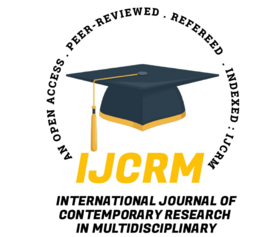International Journal of Contemporary Research In Multidisciplinary, 2025;4(3):393-399
The Psychological and Social Impact of Gender Dysphoria on Adolescents
Author Name: Krshang Parashar; Vaishali Goel;
Paper Type: research paper
Article Information
Abstract:
This study investigates the complicated psychological and social effects of gender dysphoria (GD) on teenagers. It provides a brief historical overview of gender diversity and examines the difficulties in accurately measuring the proportion of gender-diverse people due to varying definitions and diagnostic criteria. The paper discusses the history and utility of the GD diagnosis in the DSM-5 and ICD frameworks, as well as how care requirements have changed over time. This review combines results from contemporary empirical literature to better understand the psychological and social effects of GD during adolescence. The research focuses on the relationship between gender dysphoria, mental health outcomes, and social settings like family, peers, schools, and healthcare systems. It finishes by identifying research gaps and proposing inclusive support systems.
This report also addresses issues such as emotional distress, societal rejection, misgendering, and the importance of gender-affirming care. This research aims to provide actionable insights for psychologists, mental health professionals, and general practitioners (GPs) who interact with transgender adolescents.
Keywords:
Gender Dysphoria, Psychological and Social Impact
How to Cite this Article:
Krshang Parashar,Vaishali Goel. The Psychological and Social Impact of Gender Dysphoria on Adolescents. International Journal of Contemporary Research in Multidisciplinary. 2025: 4(3):393-399
Download PDF





